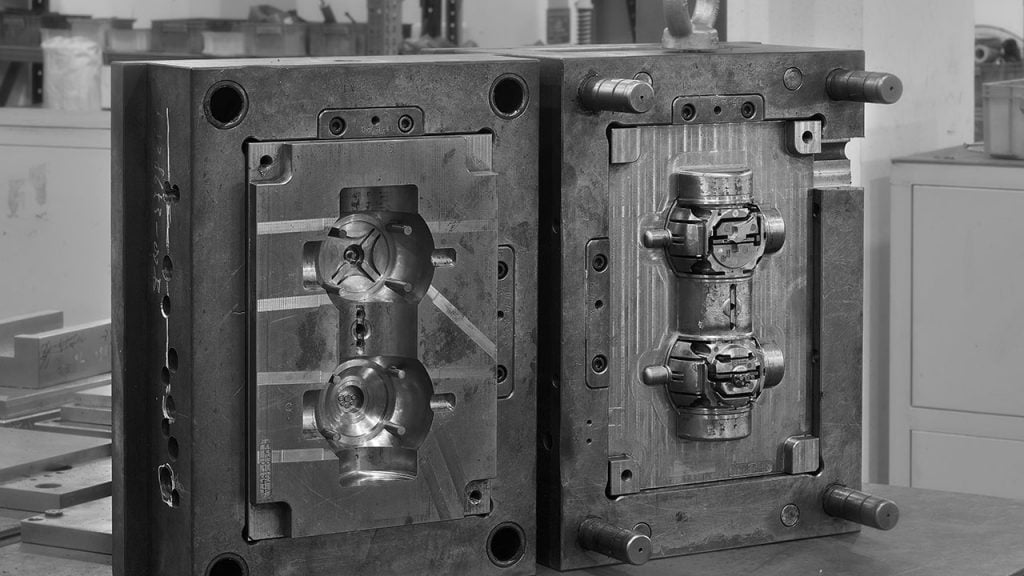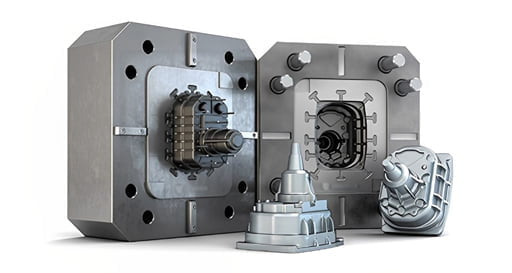Die casting, and injection Molding is probably naming you’ve heard of, but you may not fully understand either method or its differences. Depending on the specifics of your application or components, you may be able to choose between die casting and injection Molding, two of the most frequent manufacturing processes. Which one is the best: Die casting vs Injection Molding?

Each method of manufacturing has its advantages and disadvantages. Due to the similarities between the methods, designers and engineers may have difficulty selecting which manufacturing method is best for satisfying the demands imposed on the component manufacturer over which they are responsible.
Both die casting and injection Molding are widely used in the industry. Many materials used in homes, offices, and other locations were likely created using one of these two methods.
A clear vision of the final project can help you choose the proper materials. If, on the other hand, you’re not sure which technique is best for you, this guide tends to portray a thorough comparison that will choose you between Die casting vs Injection Molding; keep reading!

Die Casting
Die casting is a high-pressure metal casting process used in industry. All the while, the metals are heated to the melting point. The liquid metal is then subjected to tremendous pressure, where it is reshaped. The efficacy of this strategy has been recognized from the beginning of time. In fact, it dates back to the 1850s.
Die casting is an excellent method for making geometrically complicated components since the metals are kept in a liquid state throughout the operation. This method requires using die-casting equipment with either a built-in or separate furnace.
At this point, the metal used as the raw material has been heated to the point where it is liquid. Aluminum, zinc, and coppers are nonferrous metals and the most common choices.
Pros Of Die Casting
Die casting is a very efficient method for producing large quantities in rapid succession since it is a highly repeatable process. These are some additional benefits of die casting:
- Precision and dimensional stability
- Reducing or doing away with secondary, tertiary, or final production steps
- Possibility of producing complex geometries
- Standardized subassemblies
Injection Molding
Generally, this is one of the most productive modern production methods. Many companies that make custom belt buckles rely on it. Raw materials may be created from a wide variety of resources, including metal, glass, confections, and elastomers.
Yet, plastic is used more often than any other basic material. Many polymers, such as polyethene, ABS, nylon, polypropylene, and thermoplastic polyurethane, are often used.
Injection Molding of plastics and other polymers may produce almost any shape or form desired. In addition, it may be used to make plastic components with thin walls, which can be used for various uses. Plastic housing is the most popular, and it’s utilized to make all sorts of things, from electrical components’ insulation to car dashboards. A further case in point is home appliances.
Pros of Injection Molding
The following are most common benefits of opting for injection moulding:
- The price of plastic-moulded parts may be lower than that of metal ones depending on their volume.
- Parts manufactured using plastic injection Molding are insulators of the highest grade.
- Greater malleability during the casting process
- Accommodates a wide range of plastic and polymer types
- It’s not uncommon for plastic moulds to have fillers added to them to increase the material’s strength.
Differences: Die Casting vs Injection Molding
Moulding and casting are, unsurprisingly, very comparable procedures. However, there are a few key distinctions, most notably the materials used in production.

Possibilities of the Method
If you go back and read how to implement each tactic, you’ll see that they’re quite similar. However, not every process makes use of the same components or is conducted under identical environmental circumstances.
In plastic injection Molding, controlling the temperature is essential. Temperatures vary between the barrel, the nozzle, and the mould. Both low temperatures and high ones will induce flaws in the product.
Differences in precision and accuracy in measurements
Each metal alloy has its own tolerance requirements that determine how close together a component may be cast during the die-casting process. A uniform tolerance grade is assigned to each metal. Size and storage capacity are other important considerations. On the other hand, die-casting usually results in high accuracy and tolerance.
In general, products with tighter tolerances are more accurate. However, it’s crucial to adhere to the industrial tolerance rules while making products using the die-casting method. Die casting often results in more precise and acceptable products than injection Molding, which is why it’s so popular.
Usage of Materials Varies
Die casting often makes use of metals and alloys for its base materials. In contrast, to blow Molding, injection Molding is applicable to a wider variety of materials. Metals such as steel, Aluminum, and brass may be used as raw materials for injection Molding, which is similar to plastic injection Molding but uses metals rather than polymers.
Injection Molding is a common manufacturing method, and steel and Aluminum are two common metals and alloys utilized as raw materials. This proves that injection Molding is a more flexible and comprehensive manufacturing method.
A Wide Range of Surface Finishing Choices
It’s common knowledge that production isn’t done until it’s finished. In contrast, the die-casting process often results in a highly polished final product. It’s a plus to have this operation done. Extra polishing is for show only. Injection Molding is a one-step procedure; thus, no further finishing steps are required. Even more common than die-casting is this practice.
Surface finishing techniques such as anodizing, powder coating, chem film, gold plating, impregnation, and others are all accessible for die casting. The primary goals of these coatings are to improve the product’s appearance while also enhancing its longevity, thickness, mechanical resistance, and chemical resistance. De-gating, de-flashing, cleaning, and decorating are the four primary sub-categories that fall under the overarching term “finishes” when discussing injection Molding.
Costs associated with production, such as tooling
The bulk of a die-casting operation’s budget goes toward labour and machinery. There is less manual labour required. Hence the price is mostly determined by the equipment needed to complete the process. Costs associated with creating specialized dies for precise die casting might be considerable. They are excellent examples of any kind of high-quality production method.
But injection Molding may be done at a lower cost. The price of injection Molding may be affected by a number of factors, such as the complexity of the product and the kind of raw material used. On the other hand, you may reduce the overall price by employing finishes just where they are needed and keeping the design as simple as possible.
Plastic injection manufacturing is substantially more cost-effective than die casting for the mass production of a single item. In particular, it is one of the least expensive production methods.
Moulds Comparing
Although the end products of injection Molding and die casting are similar, the two processes are vastly different in a number of critical ways.
Die casting requires a high injection pressure. Thus the casting’s mould should be rather thick to prevent deformation and breakage during heat treatment. A diversion cone is utilized to break up the high pressure caused by the flow of material since the gate of a die-casting mould is different from that of an injection mould.
Because of the high temperature (over 700 degrees) reached in the mould cavity during die casting, quenching the cavity is unnecessary. On the other hand, injection moulds need a quenching step. Die casting tooling is very corrosive. Thus it has to be cleaned and protected before it can be used.
The exhaust slot and slag collecting bag must be opened for a die-casting mould to vent gas. In contrast, ejector pins and a parting surface are all needed for injection Molding.
How to choose: Die Casting Vs Injection Molding
Plastic injection Molding is an alternative when choosing between die casting and plastic injection Molding. The first step in building any component is understanding how it currently operates. This facilitates the decision-making process. The next stage analyses the pros and cons of die casting and injection moulding for how the component works. It will then be clear to your which approach is best.
Die casting is not the optimum technique for materials that expand or contract under pressure, such as fluids. The injection moulding process is ideal for making huge quantities of identical products. However, an exceptionally high precision and accuracy standard is required to manufacture very complex components.
In certain cases, the output of one of these techniques could be up to snuff. After that, we can talk about the constraints of our budget, which is critical when looking for places to save money.
Conclusion
Numerous analyses of Die casting vs Injection Molding reveal that both processes are excellent methods for high-quality manufacturing products. Since die casting and injection moulding are two of the most widespread techniques used in production, they are naturally of interest to many businesses throughout the globe. There are advantages and disadvantages to each approach. Knowing the procedures involved and the benefits and drawbacks of each method makes it much simpler to decide which ways to apply.










